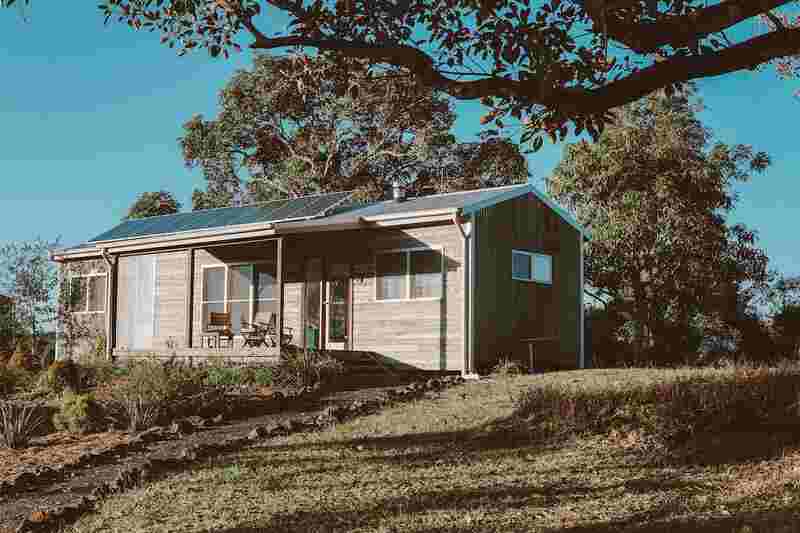As more and more people become aware of the climate emergency, it’s only natural that the demand for sustainable homes is growing. These houses minimize waste, reduce energy consumption, and have lower emissions that impact the environment.
But moving to a newly built sustainable house isn’t the only option. You can make simple upgrades to your current house to make it more eco-friendly. Doing this isn’t only good for the environment; it also reduces your energy bills and makes your house more comfortable to live in.
In this guide, we’ll help you understand what it means to have a sustainable house. We’ll also share some of the top ways to make your home more eco-friendly.
What is a sustainable house?
Sustainable homes are built in a way that optimizes water and energy consumption and minimizes waste. This involves every aspect of the house, including appliances, plumbing fixtures, HVAC systems, decoration, and construction materials.
How can you make your house more sustainable?
1. Upgrade your insulation
Upgrading your home’s insulation prevents heat from escaping through a house’s floors and walls. This helps reduce heating bills during winter. Some sustainable insulation materials include the following:
- Aerogel
- Cellulose
- Cotton/denim
- Icynene
- Polystyrene
- Sheep’s wool
Having a properly insulated home also reduces its overall thermal energy consumption, leading to lower carbon dioxide emissions. This greenhouse gas is mainly responsible for the rise in the Earth’s temperature.
2. Install high-performance windows
Basic single-glazed windows are responsible for the majority of lost energy inside the house. Upgrading to double-glazed windows can help trap heat in the home and also shut out noise from busy streets.
If you have the budget for it, you can even try to install triple-glazed windows, which provide even greater insulation. However, note that they will require sturdier frames and stronger hinges, driving up the cost.
For those who live in a warmer climate, you can look for windows with low solar gain. These windows are known for conducting less heat.
3. Try renewable energy systems
Renewable energy systems generate power from sources that aren’t depleted when used. They are great for the environment since they lessen our reliance on coal or natural gas.
Here are some examples of renewable energy systems:
- Solar energy systems: Solar technologies absorb sunlight and convert them into thermal or electrical energy. They mainly generate power during the daytime, but they can store energy in a solar battery so that the electricity can be used at night.
- Geothermal heat pumps: Geothermal heat pumps transfer heat from the ground inside your home.
- Air source heat pumps: Air source heat pumps transfer heat from outside air to water. They heat rooms through radiators or underfloor heating.
- Biomass boilers: Biomass boilers use non-fossil fuel resources, such as sustainably sourced wood pellets, to create heat.
4. Install a rainwater harvesting system
A rainwater harvesting system collects rainwater and filters it before storing it below the ground. You can use the stored water for flushing toilets, washing clothes, and watering plants. That way, you don’t always have to rely on water from the tap.
Read Also: How To Make Your Home Energy Efficient In 7 Ways
5. Install a cool roof
If you live in a warmer climate, consider installing a cool roof. This type of roof is designed to reflect more sunlight and absorb less solar energy. This lessens the need to use air conditioning and improves indoor comfort. Moreover, it can help inefficient or undersized air conditioning units provide enough cooling for your house.
A skilled draftsman can help you design a cool roof. They’ll help ensure that the structure matches the style and aesthetics of your current house.
6. Invest in energy-efficient appliances
Appliances consume the most energy in the house. Consider upgrading any of the following to newer, more energy-efficient models:
- Air conditioning units
- Dishwashers
- Electric car charging stations
- Refrigerators
- Washer/dryers
- Water heaters
When shopping for a new model, check the labels for the appliance’s average energy consumption in kilowatt-hours (kWh). Compare appliances based on this information.
7. Use eco-friendly paint
The next time you give your house a fresh coat of paint, consider using those with low or no volatile organic compounds (VOCs).
VOCs are organic chemical compounds that evaporate indoors. These are the chemicals that you smell whenever you use paint products. Being exposed to these chemicals can result in short and long-term health effects.
8. Install a smart thermostat
A smart thermostat automatically controls the house’s heating and cooling settings based on the time of the day. It also monitors the house’s energy consumption. Unlike older, programmable thermostats, a smart thermostat can connect to the local Wi-Fi and be controlled using your smartphone.
Make your home more sustainable today
Many newer homes are built with sustainability in mind, but it’s possible to retrofit a current home to meet sustainability standards. If you’re planning a home improvement project, making sustainability upgrades should be one of your top priorities. Not only do these improvements reduce water and energy costs, but they’re also better for the environment.


